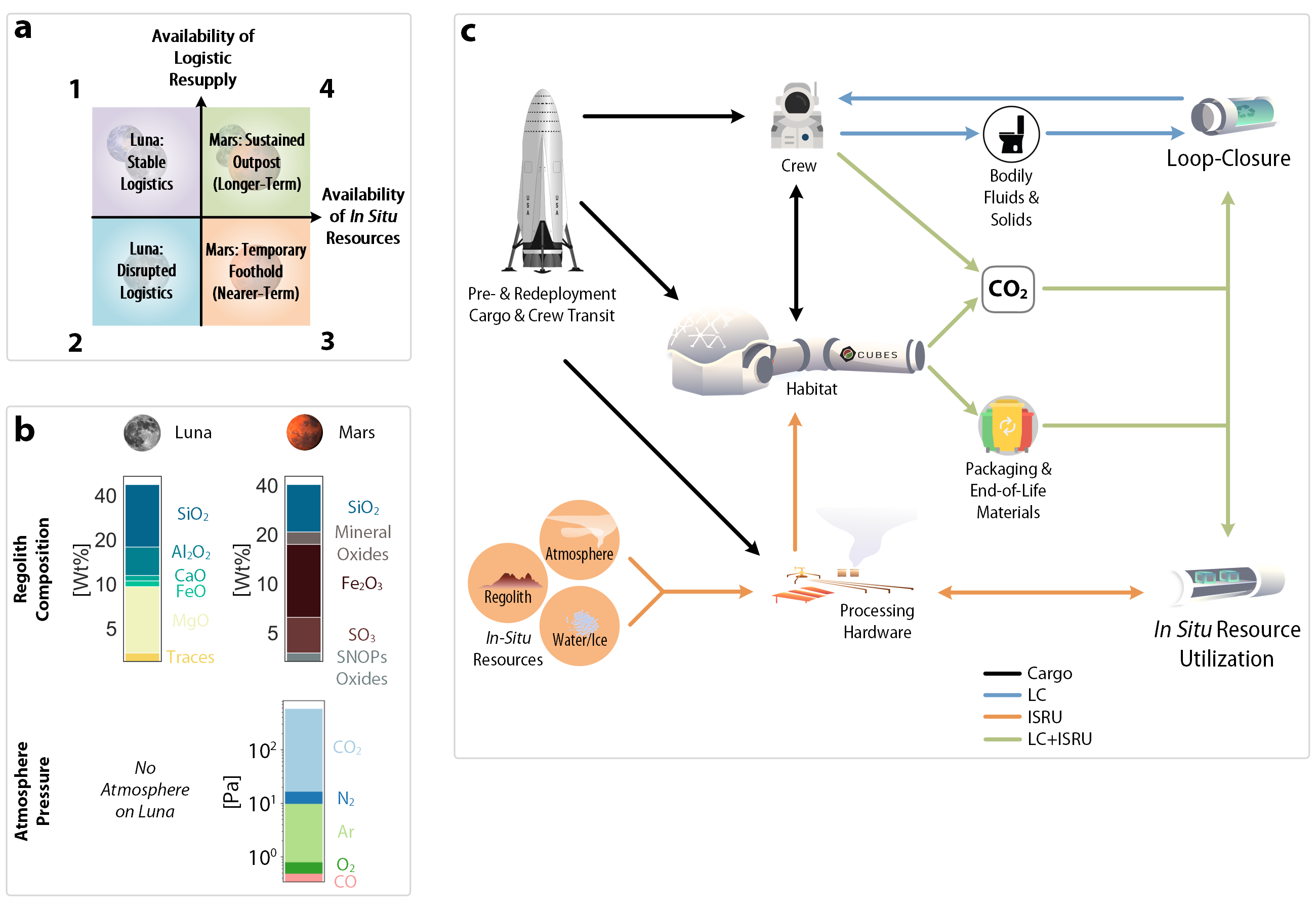As renewed interest in human space-exploration intensifies, a coherent and modernized strategy for mission-design and planning has become increasingly crucial. Biotechnology has emerged as a promising approach to increase mission resilience, flexibility, and efficiency by virtue of its ability to efficiently utilize in situ resources and reclaim resources from waste streams. Since its infancy during the Apollo years, biotechnology, and specifically biomanufacturing, have witnessed significant expansions of scope and scale. Here we outline four primary mission classes, on Luna and Mars, that drive a staged and accretive biomanufacturing strategy. Each class requires a unique approach to integrate biomanufacturing into the existing mission architecture and so faces unique challenges in technology development.These challenges stem directly from the resources available in a given mission class – the degree to which feedstocks are derived from cargo and in situ resources – and the degree to which loop-closure is necessary. We see that as mission duration and distance from Earth increase, the benefits of specialized sustainable biomanufacturing processes increases. Here we present a strategic approach, guided by technoeconomics, to development, testing, and deployment of these technologies serves to nucleate the larger effort of supporting a sustained human presence in space. The processes needed for each scenario spans the technical breadth of synthetic biology to design engineering, from sophisticated genetic tailoring of chassis-organisms to building scalable, automated, easily operable bioreactors and processing systems. As space-related technology development often does, these advancements are likely to have profound implications for the creation of a stable, resilient bioeconomy on Earth.

